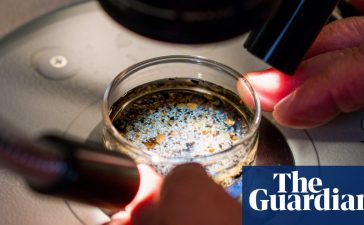
© Reuters.
TDK Corporation (TYO: 6762), a leading electronics company, reported a decline in net sales and operating profit for the third quarter, citing a global economic slowdown and market stagnation.
Despite the challenges, the company saw an increase in year-to-date sales and operating profit, driven by growth in specific segments like automotive capacitors and sensors. TDK’s Executive Vice President, Tetsuji Yamanishi, presented a full-year forecast anticipating stable sales or a modest increase of up to 3% depending on market conditions.
Key Takeaways
- Net sales decreased by 5.3%, and operating profit fell by 17.5% year-on-year.
- Growth was observed in sales of passive components and sensors for the automotive market.
- HDD market sales significantly declined.
- Year-to-date, net sales and operating profit showed an increase.
- The company is facing a global economic slowdown and a depreciating yen.
- Full-year forecast expects stable or slightly increased sales in various segments.
Company Outlook
- TDK expects overall sales to remain unchanged or increase by up to 3%.
- Full-year forecast includes net sales of JPY2.090 trillion, operating income of JPY170 billion, and net income of JPY120 billion.
- Dividends are projected to remain unchanged.
- Capital investment forecast revised down by JPY10 billion to JPY230 billion.
- Increased depreciation and R&D expenses anticipated due to yen depreciation.
Bearish Highlights
- Sales of passive components for ICT and industrial equipment markets declined significantly.
- HDD market faced a considerable downturn.
- Global economic challenges and currency fluctuations impacted performance.
- Decline in sales expected for passive components and sensor application products due to seasonal demand and ICT market decline.
Bullish Highlights
- Sales of ceramic capacitors and temperature and pressure sensors for automotive applications grew.
- Net sales in the Energy Application Products segment increased by JPY600 million.
- Operating income in the same segment rose by JPY8.1 billion.
- Sales of nearline HDDs showed recovery signs, boosting HDD head and suspension sales volumes.
Misses
- Operating profit fell by 17.5% compared to the previous year.
- Sales and profits in power supplies for EVs declined.
- Energy application products segment forecasted to decrease by 16% to 13%.
Q&A Highlights
- The company is focusing on optimizing production systems through structural reforms and cost reductions.
- They plan to improve asset management efficiency and are prepared for restructuring costs in the first quarter.
- TDK is adjusting its capital investment plans while closely monitoring supply and demand to optimize inventories.
TDK Corporation remains cautious yet optimistic about its future performance amidst a challenging economic environment. The company is taking strategic steps to mitigate the impact of market fluctuations and currency depreciation, aiming to maintain stable sales and secure profitability in the upcoming fiscal year.
InvestingPro Insights
In the face of a global economic slowdown and market stagnation, TDK Corporation (TYO: 6762) has managed to navigate through the turbulence with strategic growth in select segments and a commitment to shareholder returns. Here are some key insights from InvestingPro that shed light on the company’s financial health and market position:
InvestingPro Data:
- The company’s current Market Cap stands at 19.89B USD, reflecting its substantial presence in the industry.
- TDK’s P/E Ratio is 30.81, which may suggest a high earnings multiple compared to industry peers.
- Despite a recent decline in revenue growth, with the last twelve months as of Q3 2024 showing a -5.7% change, the company’s Gross Profit Margin remains robust at 26.18%.
InvestingPro Tips:
- TDK is recognized as a Prominent player in the Electronic Equipment, Instruments & Components industry, which is essential for investors considering the company’s competitive position.
- The company has demonstrated a strong commitment to its shareholders by maintaining dividend payments for 33 consecutive years, indicative of financial stability and a shareholder-friendly policy.
For investors looking for more in-depth analysis and additional insights, there are over 12 InvestingPro Tips available, which can be found at https://www.investing.com/pro/TTDKY. These tips provide a comprehensive look at TDK’s financials, market performance, and future profitability predictions.
As we welcome the New Year, InvestingPro is offering a special sale with discounts of up to 50%. To add even more value to your investment journey, use coupon code SFY24 for an additional 10% off a 2-year InvestingPro+ subscription, or SFY241 for an additional 10% off a 1-year InvestingPro+ subscription. This offer is a timely opportunity for investors to access premium financial tools and insights at an exceptional value.
Full transcript – TDK Corp (TTDKY (OTC:)) Q3 2024:
Unidentified Company Representative: If I may, I would like to start the TDK Corporation Third Quarter and Performance Briefing for Fiscal Year March 2024. Allow me to introduce the attendees. We have Tetsuji Yamanishi, Executive Vice President, thank you; Fumio Sashida, Corporate Officer; Taro Ikushima, Corporate Officer, thank you; Takao Tsutsui, Corporate Officer. Thank you indeed for the introduction. That’s all. Thank you again for your — thank you again for your kind attention.
Tetsuji Yamanishi: Well, this is Yamanishi speaking. I’d like to thank you for your precious time despite your busy schedule to attend our third quarter performance briefing for FY March 2024. I’m so happy to have so many of you. If I may now like to actually go through the outline of the consolidated results. First, during the third quarter and year-to-date, although the global economy remained firm in North America, the economic slowdown in Europe and China as well as the unrest surrounding in the Middle East region caused a growing sense of the economic slowing down. Furthermore, the Japanese yen continued to depreciate against the US dollar as well as against the euro. Under such a business environment, in the electronic market, which actually affects our business performance in addition to the stagnant demand in the ICT and HDD markets, due to the prolonged slump. The overall demand in the industrial equipment market remained weak. In the automotive market, production of xEVs and other vehicles exceeded the level of the same period of the previous year, but on a parts inventory adjustment by some customers were prolonged, resulting in a lower demand for pass down we had expected at the beginning of the period. And on a year-on-year basis, net sales were down 5.3% and operating profit was down 17.5%. Looking at the sales by the business segment by market, sales of the passive components for the ICT and industrial equipment markets declined significantly, while sales of the passive components and the sensors for the automotive market increased, but the growth slowed down due to the prolonged inventory adjustments by customers. Demand in the HDD market was also significantly lower than the previous year and sales of HDD Heads and Suspensions declined sharply, but signs of improvement began to appear from the third quarter. Sales volume of small rechargeable batteries for the ICT market remained almost unchanged year-on-year, but sales decreased due to a drop in the selling process following a decline in the market prices. Next I’d like to go through the highlights of the Q3 year-to-date results. With FX fluctuations, net sales was up about JPY22.5 billion, operating profit was about JPY70.2 billion. Including that with the impacts in place, net sales was JPY1.97 billion and JPY90 billion year-on-year basis, 5.3% down. Operating profit JPY157 billion year-on-year basis, JPY32.9 billion, 17.5%. And profit before tax was JPY17.8 billion. And actually, net profit attributable to owners of parent was JPY65.3 billion. Actually, our earnings per share was JPY172.14. As for the ForEx sensitivity, we estimate that as before the impact of JPY1 fluctuation against the US dollar would be in a JPY2 billion and impact of [indiscernible] vis-a-vis euro would be about JPY600 million. Next, allow me to explain the third quarter results on the consolidated basis. Including the impact of change rate fluctuations of approximately JPY22.5 billion on net sales and JPY3.8 billion on operating income, net sales decreased JPY27.7 billion or 4.7% year-on-year to JPY559.3 billion, while operating profit increased JPY1.8 billion or 2.7% to JPY70.2 billion. Profit before tax was JPY76.9 billion and net profit attributable to owners of parent was JPY65.3 billion, up 30.8% from the same period last year. Earnings per share amounted to JPY172.14. I will now explain the situation by the segment for the first nine months of the fiscal year. Net sales of passive components were JPY427.1 billion, down 3.2% year-on-year basis, although net sales growth in the automotive market mainly for xEVs caused by the declines in the sales for the ICT market as well as industrial equipment market. Operating profit was JPY50.2 billion, down 37%. Although sales into the automotive market increased in all businesses, the performance of each business segment varied due to the ups and downs of orders received in each market and each application. Though we were able to secure the growth and the sales in the ceramic capacitors, due to the increased sales, particularly in the automotive market but earnings declined due to the deteriorated product mix and other factors, while our sales and the profit of aluminum electrolytic capacitors and film capacitors decreased due to a slowdown in demand in the industrial equipment market. Sales and profit of inductive devices and piezoelectric material components and the circuit protection components declined, due to decreased demand from the industrial equipment market as well as the ICT market and also from the consumer electronics and the gaming markets. Next, the Sensor Application Products business. Net sales being JPY135.3 billion, up 3.6% year-on-year and operating profit was JPY9.8 billion, down 23.2%. Sales and the profits of temperature and pressure sensors increased, due to the higher sales into the automotive industry, despite the lower sales to the industrial equipment market and consumer electronics. Sales and the profits of magnetic sensors increased due to higher sales of Hall sensors to the automotive industry and a strong sales of TMR sensors for smartphones. On the other hand, sales and the profits of MEMS sensors decreased due to lower sales in the ICT market and the industrial equipment, although the sales of motion sensors to the automotive industry expanded. Next, in regard to the Magnetics Application Products, net sales were JPY132.4 billion, down 15.9% year-on-year. And operating profit was a loss of JPY26.2 billion. In HDD heads and suspensions, the continued sluggish demand for HDDs resulted in a 24% year-on-year decline in total HDD demand and in particular, 35% decline in total nearline HDD demand, which led to a significant year-on-year decline in sales volume for both heads and suspensions for HDDs. So revenue went down and the loss became larger. Structural reforms to optimize the production systems are now being implemented as planned. We have allocated approximately JPY1.9 billion for nine months on a cumulative basis. Sales of magnets declined due to lower sales of industrial equipment and then deficit increased slightly due to the delayed productivity improvement. Next, Energy Application Products. They recognized that the sales of JPY883.5 billion and operating income of JPY155.3 billion, a 5.4% increase from the same period last year on sales, but on the other hand, it’s the increase of 10.4% for the operating income. In the rechargeable battery business, where the sales volume of small batteries for smartphones increased. Sales increased due to the lower selling price and caused by the falling materials prices and also the price discounting. And also, the sales of the medium-sized batteries also decreased due to the business transfer to the JV. And despite the decline in sales, we secured an increase in operating income due to, one thing, the increase in the sales volumes, for second, streamlining effects and the foreign exchange gains. Sales and operating income of power supplies for industrial equipment increased due to enhanced sales to industrial equipment such as semiconductor manufacturing equipment and the medical equipment in response to the backlog of orders, while the loss on power supplies for EVs narrowed significantly due to the effects of structural reform at the end of the previous fiscal year in addition to increased sales. Next, this is the waterfall chart representing the change of operating incomes of JPY1.8 billion. The factors leading to this increase is in the third quarter, include for one thing, the decline in the volume of possible components, a deterioration in the product mix and the decrease in operating capacity, but on the other hand, operating income of rechargeable batteries increased due to their boosted sales. So, the total change of the profits due to the change in the sales amounted to JPY3.8 billion. Rationalization, cost reductions and the structural reform effects of JPY10.8 billion almost offsets the JPY13.7 billion decrease in profits due to change in the selling prices. SG&A expenses increased by JPY2.5 billion, due to an increase in the sales volumes of rechargeable batteries and new product developments and the structural cost of JPY900 million in the previous fiscal year and another JPY900 million in the current fiscal year. And we recognize it considering HDD heads. On top of that, another JPY400 million was recognized for discontinuing the legacy products for the inductive devices. However, this increase was almost offset by the impact of yen depreciation of JPY3.8 billion and eventually resulting in an overall increase of operating income by JPY1.8 billion. I will now explain the factors behind the increase or decrease in sales and operating income by segment from the Q2 to Q3 of the current fiscal year. First, in the passive components segment, sales decreased by JPY4.5 billion or 3.1% on Q-on-Q basis from the Q2, while operating income increased by JPY1 billion or 5.7%. Sales and income of a ceramic capacitor increased due to higher sales for automotive applications, while the sales and the income of aluminum film capacitors decreased due to lower demand from the industrial equipment market. And the sales of inductive devices remained almost flat, due to a decrease in the sales for the industrial equipment market. However, sales to that automotive and ICT markets increased, resulting in an increase in profit sales and even with JPY400 million of a structural reform cost to discontinue legacy products. Sales and earnings of high-frequency components increased due to higher sales to ICT market, while the sales of piezoelectric and circuit protection components declined in all markets, resulting in a slight decrease in earnings. Next, in Sensor Application Products, sales increased by JPY2 billion and operating income grew by JPY400 million yen. Sales of a temperature and pressure sensors increased due to an increase in sales for automotive applications, while magnetic sensors saw a slight decrease after that demand in the ICT market picked out. But on the other hand, the sales to the automotive market increased and both sales and operating income remained almost flat. In the MEMS sensors business, the sales volumes of motion sensors for smartphones in China went up and supported net sales growth. Next, in Magnetic Application Products segment, sales increased by JPY4.5 billion or 10% and operating income increased by JPY2.2 billion and reducing the loss. Sales of nearline HDDs bottomed out in Q2 and showed a sign of a recovery in the Q3 and leading to about 14% increase in the HDD head sales volume from Q2 and approximately about 1% increase in suspension sales volume and eventually resulting in an increase in overall head sales and reducing the loss. Restructuring cost of JPY900 million were recognized in both Q2 and Q3, and there was no increase or decrease on Q-on-Q basis. Sales and operating income of magnet remained almost unchanged. Next, in the Energy Application Products segment, net sales increased by JPY600 million and operating income rose remarkably JPY8.1 billion. In rechargeable batteries, sales declined due to the transfer of medium-sized batteries to the joint venture, while the sales of smaller batteries increased for smartphones in China and resulting in an overall increase in the sales and profits. Business of power supplies for industrial equipment remained steady, while the sales and profits declined in power supplies for EVs. Next, let me explain the cash flow. For the first nine months total of the current fiscal year, operating cash flow was JPY333.3 billion. Investment cash flow, including CapEx, was JPY147.8 billion and free cash flow was JPY185.5 billion. In light of the market demand situation, we have further optimized inventories since the end of the first half and have also made capital investments, while carefully assessing the supply and the demand. And in Q4, and we will continue to optimize and inventories and we have another JPY500 million and also for that they have an JPY8 billion is that already have exceeded [indiscernible] forecasts. And also, going into the Q4, we’re going to work on that’s the optimizing the inventories and examining that’s the capital investments. Now I would like to explain full year forecast for the fiscal year March 2024. First of all, I would like to explain the image of a sales increase and decrease from the third quarter to the fourth quarter of this fiscal year. We have assumed an exchange rate of JPY145 to the US dollar for the fourth quarter. So there would be almost no foreign exchange impact compared to Q3. As for passive components, sales of ceramic capacities for the automotive market are expected to grow. On the other hand, sales of inductive devices are expected to decline, due to such factors as the seasonality of demand from the ICT market and overall passive component sales are expected to increase by plus/minus 0% to 3%. In sensor application products, sales of TMR sensors are expected to decrease due to a seasonal decline in the demand from the ICT market and the sales of MEMS motion sensors and the MEMS microphones are also expected to decrease due to a decline in the ICT market and — as well as decline in the sales for the game consoles. And it will be an 11% to 8% overall decrease is expected. As for magnetic application products, while the total demand for HDD is expected to decline by approximately 6%, total demand for nearline HDD is expected to increase by approximately 9%, as signs of recovery are being seen and about 10% growth over the sales volumes of HDD head and suspension is expected. On the other hand, sales of magnets for the automotive market are expected to decline and overall sales of magnetic applications are expected to increase by plus/minus 0% to 3%. In energy application products, overall sales are expected to decline by — dramatically in the sales and also for that is — and — that’s the transfer [indiscernible] and the joint ventures and total 27% to 24% decline is expected. So that’s eventually in results, we expect an overall decrease of 16% to 13% in the segment. And lastly, I would like to explain our full-year earnings forecast for the current fiscal year. During the nine-month period, production for the electronics market as a whole remained sluggish due to the weak end-market demand. On the other hand, in the third quarter of the current fiscal year, in addition to the effects of the weaker Japanese yen and the demand this recovered in the Chinese smartphone market, resulting in a higher-than-expected sales of small rechargeable batteries and also an higher expected sales of HDD heads and suspension. And result of all this, the nine-month total period performance exceeded the forecast announced on August 2nd. Based on this performance, we have revised upwardly our full-year forecast for the fiscal year March 2024 from those announced on August 2nd to net sales of JPY2.090 trillion, operating income of JPY170 billion and a net income of JPY120 billion. The first quarter forecast assumes an exchange rate of JPY145 to the US dollar from that previous forecast of JPY130 to the dollar. In addition, we expect to implement measures to improve asset management efficiency in anticipation of future changes in the demand trends and to recognize one-time expenses such as restructuring cost of approximately JPY12 billion in the first quarter. Dividends are unchanged from the beginning of the fiscal year. And we have revised it down widely our capital investment forecast by JPY10 billion to JPY230 billion after careful consideration of the demand trend, including a review of the timing of the investments made and increase depreciation and R&D expenses by JPY10 billion for each taken into consideration of expected cost increase triggered by the further depreciation of the Japanese yen in the second half of the fiscal year. Thank you very much. Thanks you.
End of Q&A:
This article was generated with the support of AI and reviewed by an editor. For more information see our T&C.








